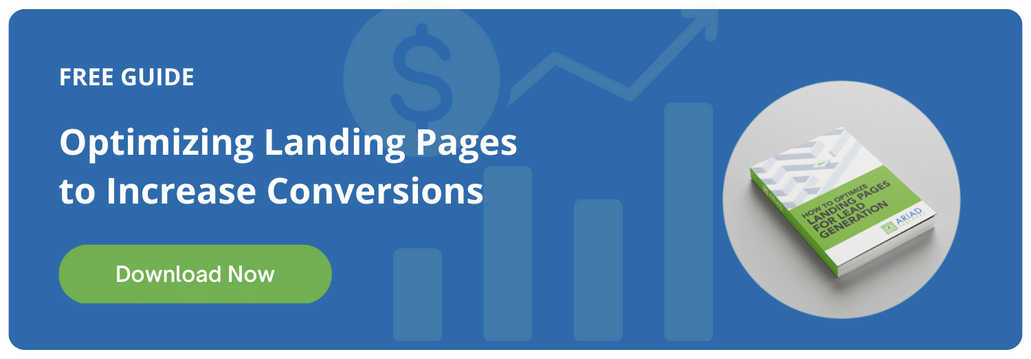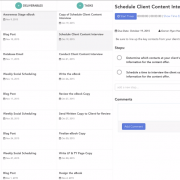Inbound Marketing for B2B SaaS: Reshaping the Market
The B2B SaaS market is flourishing with innovation. Inbound marketing for B2B SaaS continues to be a powerhouse solution to generate leads and drive consistent revenue. Gone are the days when traditional outbound methods were the go-to approach for businesses to attract clients. In today’s competitive B2B SaaS arena, inbound marketing has taken center stage, reshaping how businesses connect, engage, and convert their target audience.
Understanding Inbound Marketing for B2B SaaS
Inbound marketing isn’t just a buzzword; it’s a dynamic methodology that aligns perfectly with the unique dynamics of the B2B SaaS sector. Unlike outbound tactics interrupting prospects with intrusive ads and cold calls, inbound marketing is a customer-centric approach. It revolves around creating valuable content that addresses the challenges of your potential clients with insightful and helpful information. This content attracts, engages, and educates your audience, gradually building trust and positioning your brand as a thought leader.
Building Credibility and Trust
Inbound marketing allows B2B SaaS companies to showcase their expertise through high-quality content such as blog posts, eBooks, webinars, and whitepapers. Your trust in your brand grows when your target audience discovers that you understand their industry challenges and can provide practical solutions.
For instance, a SaaS company offering project management software can create content to optimize remote team collaboration or enhance productivity. By providing actionable insights, you demonstrate your knowledge and make a lasting impression on potential clients. As trust builds, they’re more likely to consider your solutions when they’re ready to purchase.
Personalization: A Game Changer
One of the most compelling advantages of inbound marketing in the B2B SaaS market is its ability to offer personalized experiences. SaaS products often cater to specific niches or industries, and inbound marketing allows you to tailor your content to those niches. Personalization is more than using the recipient’s first and last name; it’s about crafting content that resonates with their pain points, goals, and aspirations.
Segmentation plays a crucial role here. By analyzing your audience data, you can create content that resonates with each audience by speaking directly to their industry, job title, and more. For instance, if your SaaS solution serves both startups and enterprises, your content can delve into the unique obstacles each faces and how your product adapts to their needs.
Ten strategic avenues to categorize your B2B audience:
- Industry or Sector Focus: Begin by classifying your audience according to the specific industries or sectors they operate in. Whether healthcare, finance, technology, manufacturing, or retail, aligning your messaging with their industry can make your outreach more resonant and impactful.
- Company Magnitude: Delineate your audience based on the size and scale of their enterprises. This segmentation can encompass small businesses, mid-sized enterprises, or larger corporations. Recognizing the varying needs and financial capacities within these categories will help you tailor your offerings effectively.
- Geographical Anchoring: Delve into the geographical locations of your target businesses. Segmenting by country, region, state, or city allows for localized customization, aligning your strategies with the unique regional dynamics of each market.
- Hierarchical Roles and Functions: Drill down into the organizational hierarchy, classifying businesses based on the roles and titles of key decision-makers. This might involve CEOs, CFOs, CTOs, marketing managers, procurement officers, or other pivotal stakeholders.
- Historical Transaction Patterns: Leverage past purchase behavior as a segmentation criterion. Identify frequent buyers, sporadic purchasers, and businesses yet to engage with your offerings. This insight will guide your outreach strategies accordingly.
- Persona Profiling: Craft detailed buyer personas grounded in individuals’ distinct needs, challenges, and aspirations within your target organizations. Segmenting by personas like “IT Managers” or “HR Directors” will enable more precise messaging.
- Financial Stature and Spending Prowess: Segment by the financial prowess of businesses, considering factors like budget size and spending capacity. This stratification ensures that your product or service recommendations align with their economic realities.
- Buying Journey Stages: Categorize businesses based on their position in the purchasing cycle. Some may be in the awareness phase, while others are actively considering options or are poised to make a decision. Align your messaging with their stage-specific needs.
- Tech Stack Compatibility: Tailor your approach by considering the technology stack or software systems employed by target businesses. This allows you to offer solutions that seamlessly integrate or complement their existing tools, showcasing your value proposition more effectively.
- Engagement Spectrum: Monitor and assess how businesses interact with your digital assets—content, emails, website, and social media. Segment your audience based on engagement levels, ranging from highly engaged and responsive parties to those who may have grown dormant. This differentiation allows for customized re-engagement strategies.
The Power of SEO and Organic Traffic
Inbound marketing thrives on organic traffic; search engine optimization (SEO) is its backbone. In the B2B SaaS realm, where buyers conduct extensive research before deciding, having a robust online presence is non-negotiable. Prospective clients search for solutions to their problems, and by optimizing your content for relevant keywords, you’ll increase opportunities to get in front of your buyers and land on page one.
For instance, a SaaS company specializing in customer relationship management (CRM) software can create content around “streamlining B2B customer interactions” or “managing client data securely.” By consistently delivering valuable content tied to these keywords, your brand gains visibility, credibility, and the potential to attract high-quality leads.
The Long-Term Relationship Approach
B2B SaaS deals are often more complex and have longer sales cycles than B2C transactions. Inbound marketing’s nurturing aspect aligns perfectly with this reality. Rather than pushing for a quick sale, inbound marketing allows you to guide potential clients through their decision-making journey.
For instance, a SaaS cybersecurity solutions provider can create content addressing the ever-evolving landscape of cyber threats. By educating prospects about the risks and offering actionable steps to enhance their digital security, the company positions itself as a partner invested in the success of its clients. This approach fosters a long-term relationship that extends far beyond the initial sale.
Data-Driven Decision Making
Inbound marketing in the B2B SaaS market is a data-driven strategy that thrives on continuous improvement. Mapping KPIs, A/B testing, and closed-loop reporting to understand which pieces resonate the most and adapt your strategy accordingly.
Marketing metrics like web traffic, bounce rates, conversion rates, and visitor engagement provide valuable insights into what’s working and needs refinement. This iterative process ensures that your inbound marketing efforts align with your target audience’s evolving needs and preferences.
Inbound Marketing for B2B SaaS – Closing Thoughts
Inbound marketing has undoubtedly reshaped the landscape of the B2B SaaS market. Its customer-centric, value-driven approach has proven to be a game-changer for attracting, engaging, and converting high-quality leads. By building credibility, offering personalized experiences, harnessing the power of SEO, nurturing long-term relationships, and leveraging data insights, B2B SaaS companies can establish themselves as industry leaders and stay ahead in an ever-competitive market.
Embracing SaaS inbound marketing strategy isn’t just a choice; it’s a strategic imperative for B2B SaaS businesses that aspire to thrive and grow in the digital age.
Start driving more leads with your landing pages – Grab your free copy of the ebook and learn how to optimize landing pages to convert more of your website visitors into leads!










